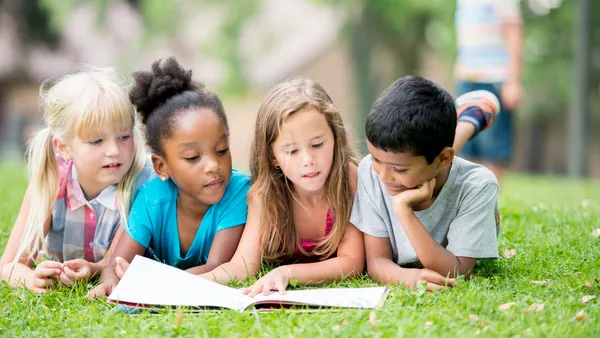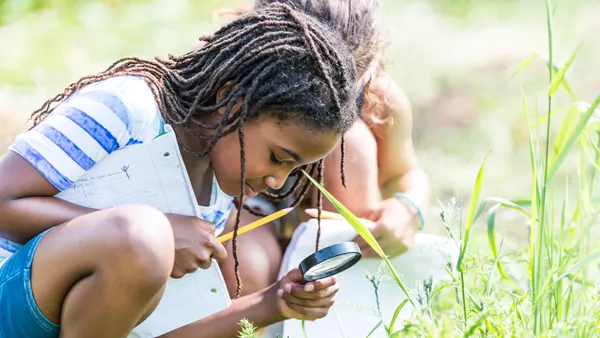Dive Brief:
- The News Literacy Project and E.W. Scripps are teaming up on an awareness campaign designed to help students sort fact from fiction in the news, District Administration reports.
- The campaign, which aims to arm educators with tools to sort through fake news, is set to launch Jan. 25-29 during National News Literacy Week. It will include a professional development session with CNN, a Twitter chat session and a "conspiratorial thinking" session.
- High school students struggle with differentiating real and fabricated news. In 2019, Stanford University researchers found 96% of seniors had trouble telling which news sources were legitimate, and more than half of the students in one study couldn’t tell a Facebook video made to look like U.S. ballot boxes were being stuffed during an election was created in Russia.
Dive Insight:
Though the use of unreliable news sources was growing prior to the past year, the events of 2020 highlighted the troubling trend of individuals believing poorly vetted sources of "news." From conspiracies about the coronavirus and fear about COVID-19 vaccines to questions about the validity of the presidential election, sorting through real and fake news has been overwhelming for many students.
Just this month, many students and educators watched in real time as Trump supporters stormed the U.S. Capitol building.
Organizations such as Facing History and Ourselves, Common Sense Media, the National Association of School Psychologists and the National Education Association have resources to help teachers navigate and break down and talk about these events for their students.
Part of the problem is a growing lack of trust Americans have in news media. In early 2020, a Rand Corp. report found 56% of people surveyed didn’t trust any news source in a phenomena referred to as "truth decay."
Broadcast and cable news were considered the most reliable sources of news by the greatest number of people, while the smallest number of respondents considered social media and friends to be the most reliable. Those who get most of their news from social media and friends also tend to be younger and female and have less than a college degree. They also have lower incomes. Those who rely on print publications and broadcast television tend to be much older and often unmarried. Those who get most of their news from the radio tend to be men who are under the age of retirement and have a college degree.
Some organizations are developing solutions, such as Philadelphia writer and volunteer Michelle Chikaonda's Zoom class, "Conspiracy Outbreak," which teaches students how to look beyond headlines and examine their beliefs. The News Literacy Project also incorporated coronavirus-virus related information into its Checkology program so students can vet conspiracy theories related to the pandemic.
The Bill of Rights Institute and other organizations also provide free online resources to help teachers create constructive, civil dialogue in the classroom.
Social studies teachers, however, may not always be objective, according to a study published in Educational Researcher. The study found differences on what teachers consider credible news sources based on their political leanings. Not surprisingly, very conservative educators felt Fox News was the most credible news source and those who were more liberal cited BBC and NPR/PBS among their top three news sources.











